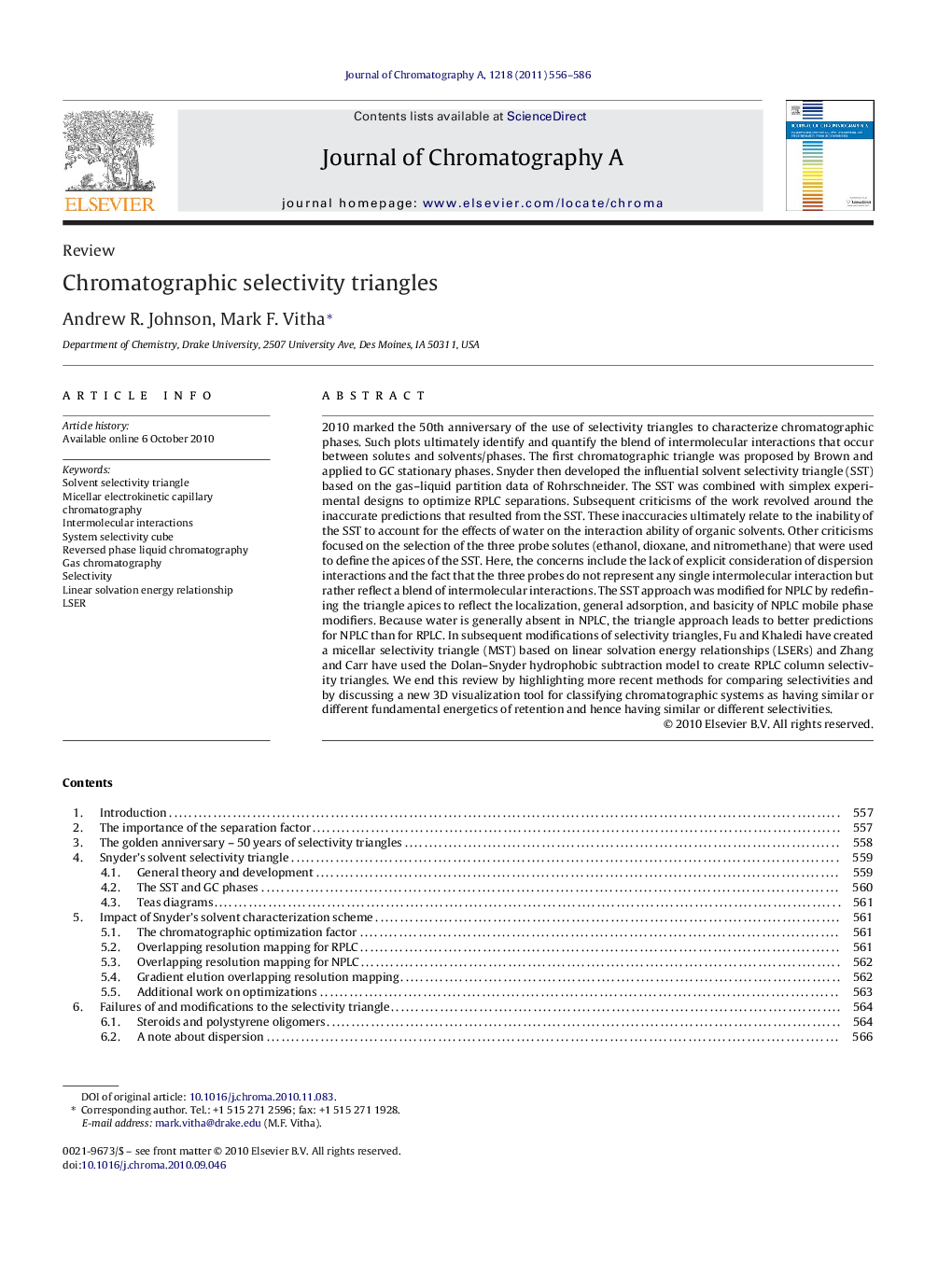| کد مقاله | کد نشریه | سال انتشار | مقاله انگلیسی | نسخه تمام متن |
|---|---|---|---|---|
| 1208192 | 965295 | 2011 | 31 صفحه PDF | دانلود رایگان |

2010 marked the 50th anniversary of the use of selectivity triangles to characterize chromatographic phases. Such plots ultimately identify and quantify the blend of intermolecular interactions that occur between solutes and solvents/phases. The first chromatographic triangle was proposed by Brown and applied to GC stationary phases. Snyder then developed the influential solvent selectivity triangle (SST) based on the gas–liquid partition data of Rohrschneider. The SST was combined with simplex experimental designs to optimize RPLC separations. Subsequent criticisms of the work revolved around the inaccurate predictions that resulted from the SST. These inaccuracies ultimately relate to the inability of the SST to account for the effects of water on the interaction ability of organic solvents. Other criticisms focused on the selection of the three probe solutes (ethanol, dioxane, and nitromethane) that were used to define the apices of the SST. Here, the concerns include the lack of explicit consideration of dispersion interactions and the fact that the three probes do not represent any single intermolecular interaction but rather reflect a blend of intermolecular interactions. The SST approach was modified for NPLC by redefining the triangle apices to reflect the localization, general adsorption, and basicity of NPLC mobile phase modifiers. Because water is generally absent in NPLC, the triangle approach leads to better predictions for NPLC than for RPLC. In subsequent modifications of selectivity triangles, Fu and Khaledi have created a micellar selectivity triangle (MST) based on linear solvation energy relationships (LSERs) and Zhang and Carr have used the Dolan–Snyder hydrophobic subtraction model to create RPLC column selectivity triangles. We end this review by highlighting more recent methods for comparing selectivities and by discussing a new 3D visualization tool for classifying chromatographic systems as having similar or different fundamental energetics of retention and hence having similar or different selectivities.
Journal: Journal of Chromatography A - Volume 1218, Issue 4, 28 January 2011, Pages 556–586